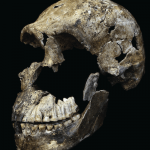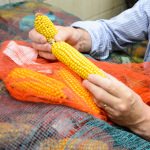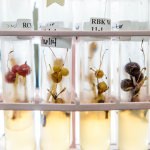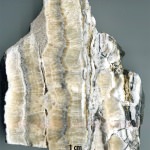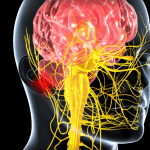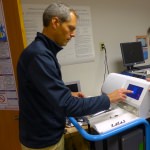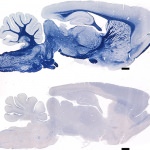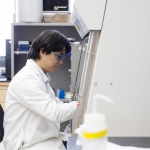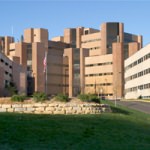Category Science & Technology
South African cave yields yet more fossils of a newfound relative
The discovery of the new Homo naledi fossils, representing the remains of at least three juvenile and adult specimens, includes a “wonderfully complete skull,” says UW–Madison anthropologist John Hawks.
New center brings together biologists, engineers to improve crops
The phenotyping center at the Wisconsin Crop Innovation Center aims to develop new ways to measure plants and address novel questions about what factors influence crop performance.
Study measures air pollution increase attributable to air conditioning
The study shows the electricity production associated with air conditioning causes emissions of sulfur dioxide, nitrogen oxides and carbon dioxide to increase by hundreds to thousands of metric tons.
From test tube to plate, UW–Madison program keeps potatoes clean
The Wisconsin Seed Potato Certification Program, a 104-year-old program run by UW–Madison, is dedicated to supplying Wisconsin farmers with quality, disease-free tubers.
Geologists use radioactive clock to document longest earthquake record
UW-Madison geoscience department researchers have peered back in time more than 400,000 years to illuminate a record of earthquakes along the Loma Blanca fault in New Mexico.
New book gives personal account of pioneering Yellowstone research
In a new book, “A Scientist in Yellowstone National Park”, UW–Madison Emeritus Professor of Bacteriology Tom Brock has written a personal account of life as a field researcher.
Brain boot camp: New technology aims to accelerate learning
UW-Madison researchers are part of an effort to develop a low-cost, easy-to-use system that aims to accelerate learning by stimulating nerves in the head and neck to boost neural activity in the brain.
Oberhauser named director of Arboretum
Internationally known monarch butterfly researcher Karen Oberhauser, a University of Minnesota conservation biologist, is returning to UW–Madison, where she studied as an undergraduate. Oberhauser has accepted the position of UW–Madison Arboretum director.
Advances breathe new life into Madison infection-detection company
A UW–Madison spinoff called Isomark is working to introduce a new infection-detection technology into hospital intensive care units.
Speakers are needed to connect with Wisconsinites at science festival
The Wisconsin Science Festival and UW–Madison Speakers Bureau are looking for passionate, creative faculty, staff and graduate student speakers to visit communities throughout Wisconsin.
Aldo Leopold’s words once again broadcast to the state
In celebration of Earth Day, one of his successors will read portions of conservationist and former UW professor Aldo Leopold’s radio addresses that originally aired more than 80 years ago.
Natural experiment, dogged investigation, yield clue to devastating neurological disease
After a 29-year quest, Ian Duncan, a professor of veterinary medicine at the University of Wisconsin–Madison, has finally pinpointed the cause of a serious neurologic disease in a colony of rats.
Marriage made in heaven: Digital inhaler add-on offers slick aid to asthma care
Propeller Health makes an add-on device for inhalers that communicates with a smartphone that records the use of routine preventative medicines and “rescue” medications intended to open constricted airways.
UW2020: WARF Discovery Initiative awards announced
Funding for research projects that range from advancing wireless communications to developing a virtual dairy farm brain that will simulate actual farm management, are among the 21 proposals selected.
Termite gut holds a secret to breaking down plant biomass
In the Microbial Sciences Building at the University of Wisconsin–Madison, the incredibly efficient eating habits of a fungus-cultivating termite are surprising even to those well acquainted with the insect’s natural gift for turning wood to dust.
UW treats first participant in trial of stem-cell therapy for heart failure
A research team at University of Wisconsin School of Medicine and Public Health has treated its first patient in an innovative clinical trial using stem cells for the treatment of heart failure that develops after a heart attack.
Symposium showcases gamut of student research, some of it already making lives better
A record 683 students took part in the annual celebration of undergraduate research.
Genetics and stress interact to shape human health and well-being
Scientists at the University of Wisconsin–Madison’s Waisman Center have shown one way in which human genetics and chronic stress interact to shape health and well-being later in life.
Protein’s flexibility helps its response to diverse pollutants
How some industrial pollutants or abnormal levels of cellular metabolites contribute to diverse human diseases is now more clearly understood, based on a new study from the University of Wisconsin Carbone Cancer Center (UWCCC) and the McArdle Laboratory for Cancer Research.
Bacterial supermachine reveals streamlined protein assembly line
Biochemists from the University of Wisconsin–Madison and the Max Planck Institute (MPI) for Biophysical Chemistry in Germany have revealed the defined architecture of what is called the “expressome.”

